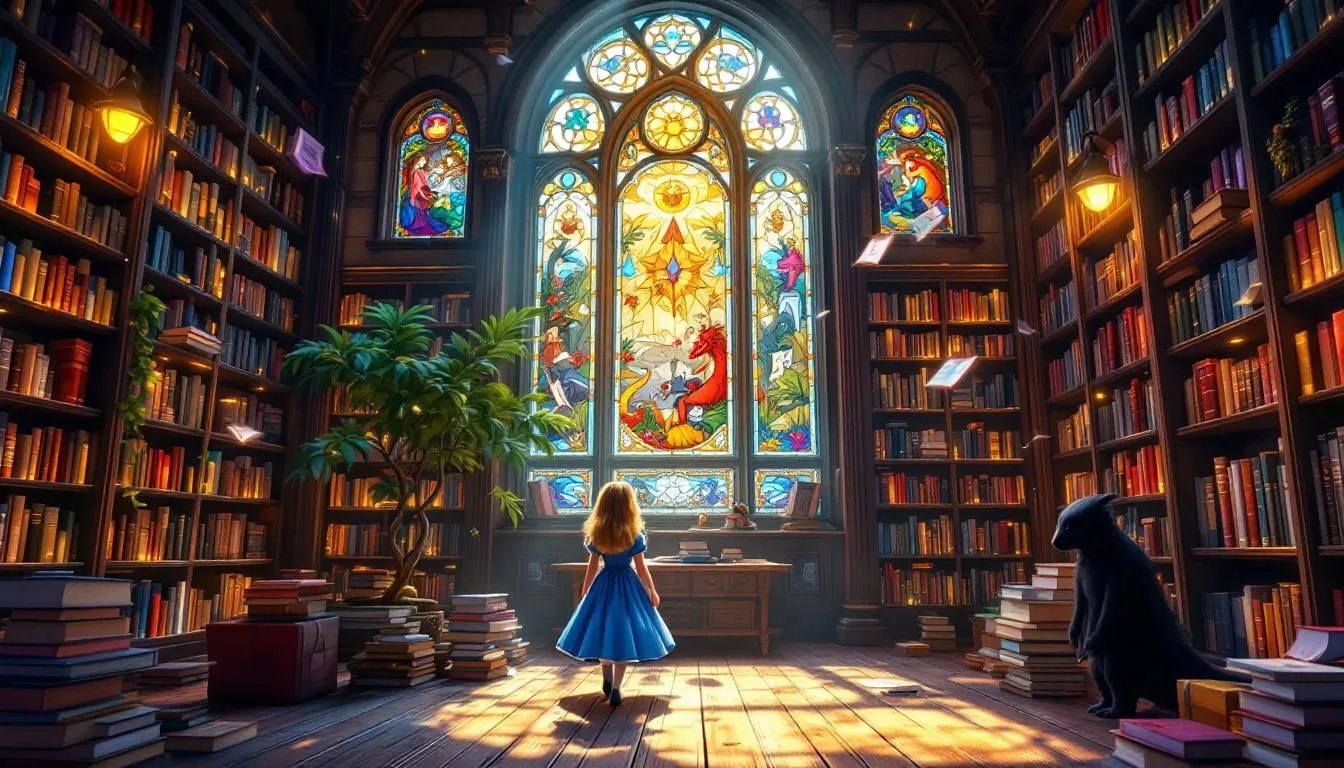Table of Contents
Quick Answer
Encouraging critical thinking in kids involves giving them opportunities to question, analyze, and connect ideas independently. Classic books provide such opportunities by challenging young minds with intricate plots and complex characters. Detective stories engage kids in problem-solving and logical reasoning, while science-inspired tales spark curiosity about the world.
Classic books foster critical thinking by presenting stories that challenge understanding and promote inquiry.
These books not only entertain but also engage kids in deeper thinking, laying the groundwork for lifelong learning and exploration.
What Is Critical Thinking and Why Is It Important for Kids?
Critical thinking is like a superhero power for the mind. It involves evaluating information, questioning assumptions, and solving problems creatively. Picture it as the mental workout that keeps young brains fit and agile, ready to tackle any challenge. Just as teaching a child to ride a bike involves guiding them from wobbly training wheels to confident pedaling, critical thinking develops through practice and encouragement.
Developing these skills early is crucial because children’s brains absorb everything around them. When kids learn to think critically, they become better decision-makers, able to weigh pros and cons before reaching conclusions. I remember my daughter, at seven, questioning the logic behind fairy tales. “Why would a big bad wolf want to eat a grandma?” she asked, wrinkling her nose. This questioning spirit is a sign of critical thinking taking root.
The long-term benefits of fostering critical thinking are immense. It enhances academic performance, as kids learn to analyze texts, understand complex concepts, and solve math problems with ease. Beyond the classroom, critical thinking equips children to navigate life’s hurdles, from making friends to resolving conflicts. It’s like giving them a map to navigate the world, ensuring they’re active participants in their journey.
As kids engage with classic literature, they encounter stories that require deep thinking and questions. This is especially true with tales that challenge them to solve mysteries, providing a preview of the next adventure on our list.
How Do Classic Detective Stories Inspire Inquiry?
Classic detective stories have a special allure for young minds, much like a mystery box begging to be opened. These tales—filled with enigmatic characters, puzzling plots, and unexpected twists—naturally engage kids in inquiry and deduction. From the moment they open a detective novel, children step into the sleuth’s shoes, piecing together clues and solving mysteries using logic and intuition.
The magic of detective stories lies in their structure. A mystery unfolds, suspects are introduced, and clues are subtly scattered throughout the narrative. This setup encourages logical thinking and problem-solving, akin to a treasure hunt where each clue leads to another, building anticipation and sharpening analytical skills. Hypothesizing about the culprit or the reasons behind events keeps kids actively engaged.
Consider the classic adventures of Sherlock Holmes, where readers are challenged to think like the brilliant detective himself. Or “The Hardy Boys” series, offering a more approachable mystery-solving experience for younger readers. Nancy Drew’s tales are another fantastic option, especially for young girls seeking a competent female sleuth to admire. These stories not only entertain but also function as mental puzzles, urging kids to think critically.
As children delve into these detective stories, they begin to appreciate the art of questioning and reasoning. They learn that not everything is as it seems, fostering healthy skepticism and a love for problem-solving. This love for inquiry can seamlessly extend into other areas of interest, like science, where curiosity and exploration are key.
Which Classic Science-Inspired Books Foster a Love for Science?
Science-oriented books are like magic carpets whisking kids away on journeys of discovery, tapping into their innate curiosity about the world. These books ignite a spark that encourages children to question everything, from the buzzing of a bee to the twinkling of stars. They transform everyday wonders into learning adventures, making science not only accessible but exciting. I remember sharing “The Magic School Bus” series with my son, watching his eyes widen in amazement as we explored the human body and outer space from our living room couch.
Several classic science-inspired books have woven their way into childhood, demystifying the natural world while instilling a love for science:
- “The Time Machine” by H.G. Wells: This timeless tale takes readers on a thrilling journey through time, challenging them to ponder concepts of evolution and societal change. It sparks conversations about the future and our impact on the world.
- “20,000 Leagues Under the Sea” by Jules Verne: Dive into the ocean’s depths with Captain Nemo and his submarine, the Nautilus. This adventure captivates young readers while introducing marine biology and oceanography.
- “A Wrinkle in Time” by Madeleine L’Engle: This classic blends science fiction with fantasy, encouraging kids to think about the universe, time travel, and the power of love and friendship.
These stories do more than entertain; they encourage kids to see the world through a scientific lens, instilling a sense of wonder and inquiry that extends beyond the pages. As children embrace these tales, they develop the skills to question, explore, and understand the mysteries around them. This foundation sets the stage for a contemporary exploration, where modern literature offers fresh perspectives on age-old concepts.
Do Modern Tales Offer a Fresh Perspective on Skepticism?
Modern tales blend skepticism with storytelling, inviting kids to question the supernatural and explore the realms of reality and fiction. These stories often feature young protagonists facing paranormal phenomena armed with curiosity and logic, prompting readers to consider different perspectives and question the world around them.
Neil Gaiman’s “Coraline” is one such impactful tale, where the young heroine discovers an alternate reality that initially seems enchanting but quickly reveals its sinister nature. This story nudges kids to scrutinize appearances and think critically about what lies beneath the surface. Similarly, “A Series of Unfortunate Events” by Lemony Snicket presents a world where the Baudelaire siblings encounter bizarre situations, teaching readers to observe and analyze rather than blindly accept fantastical explanations.
These modern stories captivate young readers by weaving skepticism into the narrative, encouraging them to solve mysteries and understand the importance of evidence and reasoning. They foster a mindset that embraces inquiry and skepticism, empowering children to tackle challenges with a discerning eye.
For parents and educators seeking to inspire critical thinking, the following modern titles are worth considering:
- “The Graveyard Book” by Neil Gaiman: This novel blends the supernatural with reality, inviting young readers to question and explore boundaries.
- “Harry Potter” series by J.K. Rowling: While magical, the series often challenges characters to solve complex problems using logic and deduction.
- “His Dark Materials” series by Philip Pullman: These books encourage readers to grapple with philosophical questions and challenge established beliefs.
As you consider these modern stories, it’s also essential to think about your child’s individual interests and reading abilities.
How to Choose the Right Book for Your Child?
Choosing the right book for your child can feel like matchmaking—finding the perfect fit requires thought and understanding. Here’s a handy guide to ensure your child’s reading journey is enriching and enjoyable.
First, consider age-appropriateness. Imagine handing a kindergartener a hefty classic like “War and Peace.” It would be overwhelming and might double as a pillow! Instead, opt for books with simpler language and engaging illustrations for younger readers. As kids grow, gradually introduce more complex narratives matching their developing comprehension skills.
Next, think about your child’s interests and reading level. If your child loves dinosaurs, why not start with a dino-themed adventure? If they’re fascinated by space, a science fiction book could capture their imagination. My son went through a phase where he was obsessed with knights and castles—cue a stack of medieval adventures that kept him engrossed for weeks.
Engaging reluctant readers can be more challenging, but not impossible. Graphic novels can work wonders, blending captivating visuals with storytelling. Interactive books involving riddles or puzzles might also spark interest. For instance, “Choose Your Own Adventure” books allow kids to make decisions, making reading an active experience. Additionally, for a truly unique and engaging experience, consider a personalized storybook from KidTeller. KidTeller creates a personalized storybook where your child is the hero. Just upload a photo, and we’ll generate a custom book filled with adventures made especially for your toddler or young child – magical, memorable, and uniquely theirs.
Choosing the right book is a journey of discovery, one that can open up a world of imagination and critical thinking for your child. As you dive into this adventure, remember that the goal is to create a lifelong love for reading.
Key Takeaways
- Classic books like “Sherlock Holmes” and “20,000 Leagues Under the Sea” nurture critical thinking through engaging plots and rich narratives.
- Modern tales such as “Coraline” and the “Harry Potter” series blend skepticism with storytelling, prompting inquiry and exploration.
- Critical thinking skills empower children to evaluate information, enhancing decision-making and academic performance.
- Integrate a variety of classic and modern books into your child’s reading routine to cultivate a love for learning and exploration.
Embrace the adventure of reading with your child, fostering a world of curiosity and lifelong learning together.






